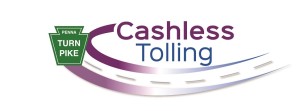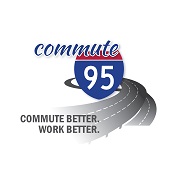
The Pennsylvania Turnpike Commission (PTC) has announced that it plans a full transition to “cashless” All-Electronic Tolling (AET) in late 2021. Once the change is implemented, in-lane or onsite payment will no longer be accepted anywhere along the 552-mile tollway.
After a pair of western PA cashless conversions in October 2019, the remaining sections of the east-west mainline, the Northeastern Extension (Interstate 476) and the Mon/Fayette Expressway (south of Pittsburgh) are scheduled to be converted to cashless in Fall 2021.
“This schedule is possible due to the success of our AET pilot locations, two in eastern PA and two on the western side of our system,” said PTC CEO Mark Compton. “Data from these pilots is clear: Performance is on par with projections after 58 million AET transactions have been processed to date at four cashless-tolling locations. We expect the same of our newest AET conversions at the Gateway Toll Point near Ohio in Lawrence County and the Greensburg Bypass (PA Turnpike 66) in Westmoreland County.”
Last year, the PTC converted the Findlay Connector in Washington and Allegheny counties and the Keyser Avenue and Clarks Summit tolling points on the Northeastern Extension in Lackawanna County. In 2017, it converted the Beaver Valley Expressway (PA Turnpike 376) in Beaver and Lawrence counties. In January 2016, it opened a cashless tolling point near the Turnpike Bridge over the Delaware River at the New Jersey border in Bucks County.
“We recognize that customers pay a premium to travel the Turnpike, and for that reason we are continually reviewing the safety and efficiency of our system,” explained Compton. “Nine years ago, we undertook an AET feasibility study at a time when E-ZPass users were at around 60 percent. Today, our studies and pilot conversions have been completed and now more than 80 percent of our travelers prefer E-ZPass.”
Since the PTC began studying, planning for and implementing AET, more than 30 agencies in 14 states have established systems using proven AET technologies.
“Cashless tolling has been adopted by dozens of agencies across the United States because of the improved safety and mobility it provides,” Compton explained. “Everybody pays electronically, so there’s no need to stop; everyone benefits from the convenience of uninterrupted travel. Plus, cash and E-ZPass customers no longer need to dart across tollbooth traffic to reach their lanes.”
When this cashless conversion is complete, drivers who had been accustomed to paying their tolls with cash or credit will instead receive a PA Turnpike TOLL BY PLATE bill by mail. A photo of the license plate will be taken, and a bill be mailed to the vehicle’s owner. Drivers with E-ZPass will pay as usual.
Compton said despite the 2021 conversion date, Turnpike Commissioners remain committed to no layoffs prior to Jan. 1, 2022. Collectors will staff toll plazas to offer guidance and aid to customers during this familiarization period.
“As we move towards AET, we will continue to do all we can to help transition impacted employees — whether that means moving to another position here at the PTC or one elsewhere,” he explained. “Many have taken advantage of resources we’ve made available, including an Employee Transition Guide to evaluate skills and consider internal and external jobs. Others have used our enhanced tuition reimbursement program to prepare for new opportunities here and elsewhere.”
How It Works
When AET is implemented across the entirety of the PA Turnpike in 2021, the cost of a trip will still be determined by the customer’s entry and exit point as it is today. All customers will proceed through the toll plazas, where there will be no need to stop for a ticket or to pay cash. Unlike the current system, all vehicles will use the same toll lanes regardless of payment method. This concept of using existing toll facilities and existing infrastructure is referred to as AET “In Place.”
Ultimately, the PTC’s system will be converted to one where all tolls are collected at highway speeds between entry and exit points. Toll plazas and tollbooths will be decommissioned and demolished; overhead steel structures along the highway (called gantries) will be installed to house electronic-tolling apparatus, and these become the new tolling points. This method of AET is known as Open Road Tolling (ORT).
An all-cashless platform will enable economic development gains in communities served by the toll road. Business and community leaders along our roadway regularly request new access-points or slip ramps. That is currently a costly undertaking. However, gantries across the mainline will enable us to cut those costs in half.





